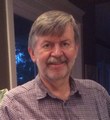FLASHBACK TO 2009: “Getting Green Infrastructure Built Right in the City of Surrey: Moving Beyond Pilot Projects” – the theme for Metro Vancouver Water Balance Forum

“Once we know what we want our watersheds and neighbourhoods to look like, the next step is to decide what the tools are that will get us there. All of us need to understand and care about the goal if we are to create the future that we all want,” stated Vincent Lalonde.










